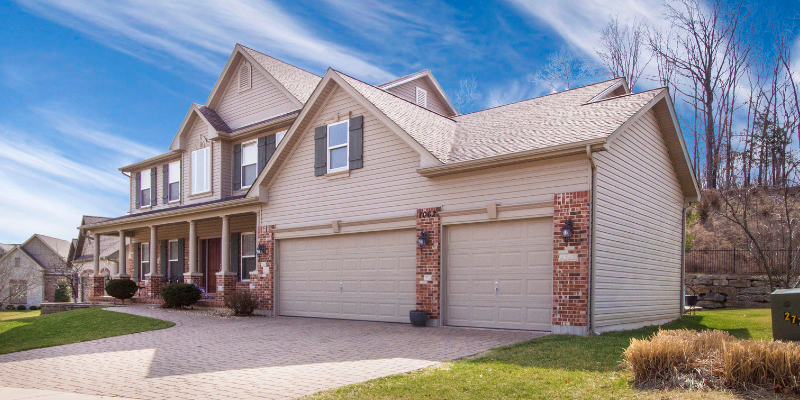
Can You Buy a Home Without Income Proof? Here’s How
You’ve been house hunting for months. You found the perfect place. Then comes the mortgage application, and suddenly you’re stuck explaining why your income doesn’t look “normal” on paper.
Maybe you run your own business and write off everything you legally can. Maybe you’re a freelancer with irregular but substantial earnings. Or perhaps you’re retired with a healthy investment portfolio but minimal “official” income. Whatever your situation, traditional lenders just don’t get it.
Don’t lose hope, though. Plenty of people buy homes without the standard W-2 and tax return routine. You just need to know what documentation matters for your specific situation.
Can I Buy a House Without Proof of Income?
Yes, you can buy a house without traditional proof of income, and you’re not alone in this situation. Thousands of borrowers close on homes every month using alternative documentation methods.
The mortgage system has finally caught up to how people earn money. Lenders offer specialized programs for people whose income doesn’t fit the employee model.
Your business might show low profits on paper due to tax strategies, but your bank account tells the real story.
Each program has different requirements, but they all recognize that financial stability comes in many forms. You just need to match your situation with the right loan type and prepare the documentation they want to see.
What Is a No-Income-Verification Mortgage?
A no-income-verification mortgage lets you qualify for home financing without submitting W-2s, pay stubs, or tax returns. You still need to prove you can afford the payments through different paperwork.
Most programs want 12 to 24 months of bank statements instead of tax documents. Lenders study your deposit patterns to figure out your average monthly income. Asset-based loans work differently. They divide your liquid investments by the loan term to create qualifying income.
You should expect to pay higher interest rates than conventional loans, usually 0.5% to 2% more. Down payments typically start at 20%, though some programs accept 10% with excellent credit.
Once you have the proper documentation, the process moves faster, as you are not waiting for tax transcripts or employment verification letters. Cima Real Estate can help you prepare everything you need to get started.
Types of Mortgages Available Without Income Verification

Four main loan types can get you approved without traditional income documents. Each works differently, so pick the option that makes your finances look strongest.
Bank Statement Loans
As mentioned, your bank deposits tell the real story about your income. Lenders analyze 12 to 24 months of your personal or business bank statements to calculate your average monthly earnings. They use about 50% of your deposits as qualifying income to account for business expenses.
You’ll need consistent deposits and a reasonable explanation for large or unusual transactions.
Most lenders want to see the same bank for the entire period, so don’t switch accounts right before applying. These loans work best when your bank statements show steady income patterns, and we finance houses for sale in Dallas and other cities in Texas, even for nontraditional-income buyers.
Asset-Based Mortgages
Got a fat investment account but barely any W-2 income? You still have a chance to buy a house.
Asset-based mortgages convert your investments and savings into qualifying income by dividing your liquid assets by the loan term (usually 360 months for a 30-year mortgage) to create a monthly income figure.
You’ll need significant assets, though. At least $500,000 in liquid investments, such as stocks, bonds, or retirement accounts, is recommended. What we like about this approach is that you don’t have to liquidate anything. You just prove you have the assets available if needed.
Stated Income Loans
These loans let you tell the lender what you make. Stated income loans are much less common now and typically reserved for high-net-worth borrowers or specific situations. They usually require excellent credit scores and substantial down payments.
Due to regulatory changes, most lenders have moved away from true stated income programs. You’re more likely to find modified versions requiring income documentation, which are less than traditional loans.
DSCR Loans for Investment Properties
Your rental property needs to pay for itself. That’s all lenders care about with Debt Service Coverage Ratio (DSCR) loans.
The lender calculates whether the expected rent will cover the mortgage payment, property taxes, insurance, and basic maintenance without considering personal income.
These loans are ideal for real estate investors who want to build a portfolio quickly. You can often close multiple DSCR loans simultaneously since they don’t count against your debt-to-income ratio.
The property must generate enough rent (at least 100% of the monthly costs).
How to Buy a House Without Proof of Income: Step-by-Step Process
Yes, you’re hacking the mortgage system legally. You’re going to use different rules that work better for your situation. Here’s how!
Step 1: Assess Your Financial Situation
If considering a bank statement loan, you need to calculate your average monthly deposits over the past 12 to 24 months. Meanwhile, you must total your liquid investments and retirement accounts for asset-based loans.
You also need to be realistic about your debt-to-income ratio and credit score. Although alternative loans are more forgiving than conventional mortgages, they still have standards.
Know your numbers before you start shopping for lenders.
Step 2: Gather Alternative Documentation
Next up, start collecting paperwork. Gather 12 to 24 months of bank statements from all accounts showing regular deposits, investment account statements, retirement account balances, and rental property documentation.
Organize everything chronologically and be prepared to explain any large or unusual deposits. Lenders want to see consistent patterns, not one-time transfers between your accounts.
Step 3: Find the Right Lender
Regular banks will just frustrate you with their rigid requirements.
You must shop specifically for non-QM specialists who understand alternative income situations, such as credit unions, community banks, and specialized mortgage companies.
Ask about their specific requirements, interest rates, and fees upfront. Some lenders are more experienced with certain borrower types. A lender who works with lots of real estate investors might not be the best fit for a retiree with assets.
Step 4: Prepare for Higher Down Payments
You’ll pay more upfront (typically 20 to 25% down versus 3 to 5% for conventional loans).
This higher down payment reduces the lender’s risk and strengthens your application, though some programs allow 10% to 15% down with excellent credit.
You must budget for the larger down payment early in your house-hunting process. This will affect how much house you can afford and might influence which neighborhoods you target.
The good news is that larger down payments often mean lower monthly payments and no private mortgage insurance.
Bank Statements as Proof of Income
Your monthly deposits will show your financial state more than your tax returns ever could. Lenders use bank statement loans to determine your real cash flow.
Most programs want 12 to 24 months of statements from your personal or business accounts. They’ll calculate your average monthly deposits and typically count 50 to 75% as qualifying income, depending on whether you use personal or business accounts.
Business accounts get looked at extra carefully, especially since lenders know you’ve got expenses to cover.
Steady wins over flashy every time. Lenders prefer seeing consistent deposits rather than hundred-to-zero patterns. They’ll question any deposit over a certain threshold and want documentation for where it came from.
Don’t try shuffling money between your accounts to inflate deposits. They know that trick; it doesn’t count as real income.
Requirements for No-Income Verification Mortgage Approval

You can’t just walk in with a smile and expect approval without traditional income documents. Lenders still need proof you won’t bail on payments; they’re just looking at different numbers. Contact us to learn what alternative documentation you can use to boost your chances.
Credit Score Requirements
Your credit score is your financial report card when everything else looks unconventional. Most no-income verification programs grudgingly accept 620 scores, but you’ll get hammered with higher rates and stricter terms.
However, things change around 700, where better rates and options open up. If you hit 740, you’re in the best spot with the best pricing. Your credit history can tell lenders how you handle debt when traditional income verification can’t.
Down Payment Expectations
Nope, that 3% down payment is not possible. Alternative documentation means putting serious money in the game (20 to 25% minimum, though some programs accept 15% if your credit is good).
The bigger down payment helps you beyond just getting approved. Lower loan amounts mean smaller payments, and you skip private mortgage insurance entirely. A smaller down payment, on the other hand, means a greater chance of lenders disapproving of your loan.
You’re building equity from day one instead of starting behind the eight ball.
Reserve Fund Requirements
Lenders want to see money sitting in your accounts doing nothing after you close. Reserve requirements typically run 2 to 12 months of mortgage payments, depending on how much you’re borrowing and how risky they think you are.
Smaller loans under $1 million usually need 2 to 6 months of reserves. Jumbo loans often demand 6 to 12 months sitting in easily accessible accounts.
Your retirement accounts don’t count. They want liquid cash they can verify without hassle.
Debt-to-Income Considerations
Lenders still calculate debt-to-income ratios using your alternative documentation methods.
Bank statement programs typically allow higher ratios than conventional loans, sometimes up to 50% instead of the usual 43% ceiling.
Asset-based loans might skip debt-to-income calculations and focus on your asset-to-loan ratio instead.
Meanwhile, DSCR loans couldn’t care less about your debts; they only worry about whether rental income covers the property expenses.
Who Should Consider a No-Income Mortgage?
These loans work best for people whose financial situation does not match their tax returns. Stop trying to fit your finances into conventional lending boxes and find the program that works with your reality.
Self-Employed Borrowers
Traditional lenders treat self-employment income with suspicion. You legally write off everything possible, which makes your taxable income look pathetic compared to what hits your bank account.
Bank statement loans solve this problem by examining your real cash flow instead of your tax-optimized reported income.
Most programs want two years of self-employment history, but the income calculations usually work better than traditional verification methods.
Business Owners and Entrepreneurs
We know your tax returns may lie about your financial capacity when you run a business.
You might show minimal personal income while your company generates substantial cash flow that never appears on individual returns.
Business bank statement loans let you use your company’s deposit patterns to qualify for a personal mortgage. Some programs even combine personal and business income streams.
The trick is showing consistent business performance through bank statements rather than explaining complex corporate structures to confused underwriters.
Real Estate Investors
Depreciation deductions and expense write-offs on tax returns destroy investment property income. Your portfolio might generate solid cash flow while looking terrible on paper.
DSCR loans ignore your income entirely. They only care whether each property covers its expenses.
You can build portfolios faster since these loans don’t count against personal debt-to-income ratios. This is perfect for scaling without getting strangled by conventional lending limits.
Retirees with Assets
Retirement often means substantial wealth trapped in investment accounts while showing modest income on tax returns.
Traditional lenders can’t see past tiny Social Security payments to understand your real financial strength.
Asset-based loans can convert investment portfolios into qualifying income without forcing liquidation. You keep investments intact while using their value to prove payment capacity.
This is much simpler than documenting complex investment income streams that change monthly.
Freelancers and Contract Workers
Freelance income fluctuates wildly, so they make traditional lenders nervous about consistency.
Great months followed by slow periods create patterns that terrify conventional underwriters.
Bank statement loans average your deposits over 12 to 24 months, which smooths out the irregular cycles. Lenders see overall earning capacity instead of panicking about month-to-month swings.
You’ll need to document work history and client relationships, but income calculations typically work much better than employment verification.
Refinancing Options Without Income Verification

We offer Financing Solutions for Every Situation in Plano and surrounding cities in Texas. Already own a home but want to refinance without the income documentation headache? You’ve got options that are easier than purchasing loans in some cases.
FHA Streamline Refinance
FHA streamline refinancing is super simple. They don’t care what you make now if you’ve been paying your FHA loan on time.
The program focuses on lowering your payment or switching from an adjustable rate to fixed, not verifying your ability to afford the new fee.
You must show that the refinance provides a net tangible benefit, usually a payment reduction or rate improvement.
Credit checks are minimal, income verification is nonexistent, and appraisals are often waived. The whole process can close in 30 days or less.
VA Streamline Refinance (IRRRL)
The VA’s Interest Rate Reduction Refinance Loan (IRRRL) is even more streamlined than FHA programs.
Veterans with existing VA loans can usually refinance without income verification, credit checks, or appraisals.
You just need to show that the new loan reduces your payment or moves you from an adjustable rate to a fixed rate. The VA assumes you could afford the original loan, so lowering the payment makes sense.
Many veterans use this program multiple times as rates drop.
No-Income Verification Refinance Requirements
Non-QM refinance programs work similarly to purchase loans but often with slightly relaxed requirements.
Lenders focus on your payment history and equity position rather than traditional income verification.
You’ll typically need at least 20% equity in your home and a solid payment history on your existing mortgage. Bank statement programs, asset-based loans, and stated income options are all available for refinancing.
Cash-out refinancing is possible but usually requires higher equity positions and stronger documentation.
Common Mistakes to Avoid When Buying Without Income Verification
Savvy borrowers sidestep these problems that can blow up their alternative financing plans. Learn from other people’s expensive mistakes.
The most significant issues that tank applications and waste everyone’s time are the following:
- Moving money between accounts to fake a higher income: Lenders catch this immediately, destroying your credibility.
- Applying with multiple lenders simultaneously: Credit inquiries pile up and create confusion about your finances.
- Assuming all alternative lenders are identical: FYI, requirements, rates, and capabilities vary dramatically between companies.
- Lying about or hiding large deposits: Always explain where big chunks of money came from.
- Making significant financial changes during the process: Don’t buy cars, open credit cards, or switch banks mid-application.
- Working with inexperienced lenders: Some loan officers have never handled non-QM loans and will fumble your file.
- Poor documentation organization: Sloppy paperwork means delays and raises red flags.
- Trying to force conventional lending: Stop fighting the system when alternative programs work better for your situation.
The most brilliant move is to find a lender who understands your borrower type and has experience with your specific documentation challenges.
Don’t waste time with conventional lenders who will frustrate you with impossible requirements.
Working with CIMA Real Estate As An Alternative to Income Verification Mortgages
CIMA Real Estate offers owner-financed homes for sale in Dallas that remove income verification, credit checks, and traditional financing headaches.
Owner financing gives you a direct path to homeownership. The seller acts as the bank, and you negotiate terms directly with CIMA Real Estate instead of traditional mortgage companies.
This works exceptionally well when you have steady income, but your situation doesn’t fit conventional lending boxes. No bank approval is needed, and there are no credit score nightmares. CIMA offers flexible terms that work for real people.
Key Takeaways: How To Buy A House Without Proof of Income
Buying a house without proof of income is possible, and it might even be easier than fighting the traditional lending system!
As we’ve shared in this guide, your options include bank statement loans for steady cash flow, asset-based loans for substantial savings, DSCR loans for investment properties, and stated income programs for high-net-worth borrowers.
However, if you’re ready to skip the bank approval headaches, Cima Real Estate offers owner-financed homes for sale in Dallas! No bank required, no credit score nightmares, and flexible terms that work for real people. Call us at (469) 770-7478 to learn more about your hassle-free path to homeownership!
